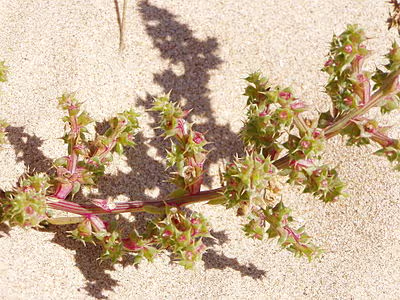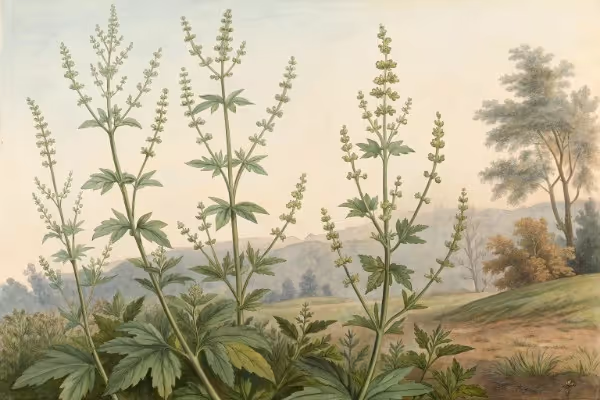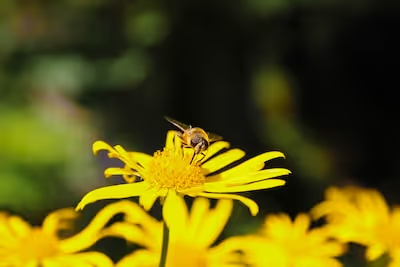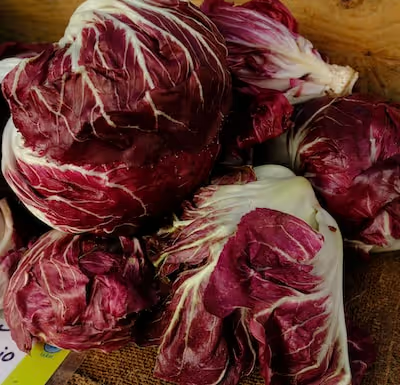Growing Achocha: How to Plant, Care, and Harvest at Home
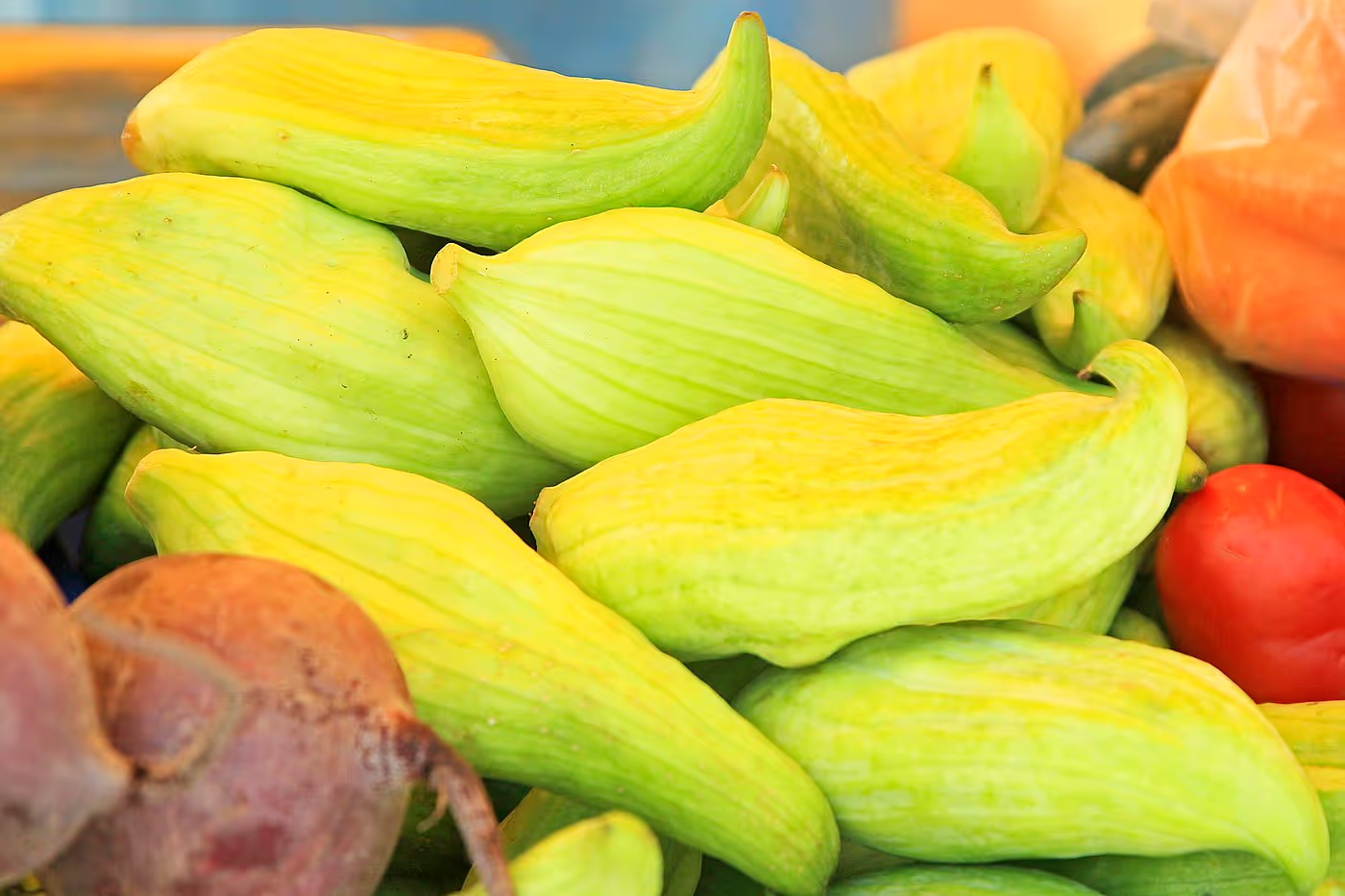
Growing Achocha
Growing achocha rewards with fresh, cucumber-like pods all summer long. Sow seeds indoors in early spring, then transplant seedlings into warm, fertile soil after frost danger passes. Train vigorous achocha vines upward on sturdy trellises to save garden space and simplify harvesting—curious to learn more about this easygoing plant?
Cheatsheet: Fast-Track Home Achocha Production
🌱 Start Indoors
- Start seeds 4–6 weeks before last frost.
- Use peat pots for less transplant shock.
- Soil temp: 70–77°F (21–25°C).
- Keep just moist, not soggy.
🌞 Transplant Outside
- Wait for night temps >50°F (10°C).
- Full sun (6+ hrs), rich, well-drained soil.
- Space 18–24 in. (45–60 cm) apart.
- Mulch to retain moisture, block weeds.
🪜 Trellis for Vigour
- Train up fence, netting, or archway; vines reach 10+ ft (3+ m).
- Stems twine rapidly—guide weekly.
💧 Feed & Water
- Water frequently; avoid drying out.
- Feed monthly with balanced organic fertilizer.
🌼 Pollination Boost
- Self-pollinates, but bees boost yield.
- Grow with basil/marigold for more pollinators.
✂️ Harvest Efficiently
- Pick pods at 1.5–2.5 in. (4–6.5 cm) for best flavor.
- Up to 150 pods per plant; harvest every 2–3 days.
- Mature pods last 7+ days refrigerated.
🌱 Save Seeds
- Let a few pods fully ripen/brown.
- Dry seeds, store cool/dry; viable 4+ years.
🔧 Tools and Products You'll Need
- Achocha seeds
- Seed trays or peat pots
- Potting mix
- Organic fertilizer
- Trowel
- Garden clippers/scissors
- Sturdy trellis/fence/netting
- Mulch (straw, compost, or bark)
- Watering can or hose
💪 Nutrition & Fresh Eating
- High in fiber, vitamin C, antioxidants.
- Eat raw, stuffed, stir-fried, or pickled.
- Productive: 1 plant feeds a household.
Sow seeds indoors in small pots 6 weeks before frost ends; warm location.
Transplant after frost; full sun, 2 ft (60 cm) apart, mulch well.
Install sturdy support—trellis, net, or arch; guide vines upward.
Water deeply, feed monthly, weed weekly, check trellis.
Pick young pods every 2–3 days from midsummer, use fresh or cooked.
-
Growing Achocha: How I Plant, Care, and Harvest at Home
I grow achocha Cyclanthera pedata like a turbocharged cucumber that loves to climb and fruit hard once heat calms down. It tastes like a cucumber met a green pepper and decided to behave.
What achocha is and why it behaves the way it does
Achocha is an Andean cucurbit with separate male and female flowers on the same vine, so pollinators matter. It thrives with warm days 68 to 86 F and cool nights 20 to 30 C and shrugs off late summer slump that stops cucumbers.
Pods run from palm sized and spiky to smooth, and the seeds look like little black rafts. Pick small for crisp snacking or let them swell for stuffing after removing seeds.
Royal Botanic Gardens, Kew: “Cyclanthera pedata is a climbing species in the gourd family, cultivated in South America for its edible fruits.”
Varieties worth your trellis
- Fat Baby Achocha compact lobed pods with mild crunch, great for quick pickles.
- Caigua smooth, canoe shaped fruit for stuffing, walls thicken nicely when mature.
- Curuba type regional landraces vary wildly, so trial a few lines for your climate.
Site, soil, and prep
I give achocha full sun and a tall support 6 to 8 ft or 1.8 to 2.4 m with at least 6 hours of direct light. It handles partial afternoon shade in hot interiors better than cucumbers.
Soil pH 6.2 to 7.2 suits it, with high organic matter and sharp drainage. I mix in 2 inches 5 cm of finished compost plus a balanced organic fertilizer at planting 5-5-5 or similar.
Direct sow or transplants
In temperate zones I start seeds indoors 4 weeks before last frost at 72 to 85 F or 22 to 29 C because it likes heat to germinate. Transplant after soil hits 60 F or 16 C and frost risk ends.
Plant 2 seeds per station, thin to one strong plant, spacing 12 to 18 inches or 30 to 45 cm along the trellis. For direct sowing, wait until nights stay above 50 F or 10 C.
Trellis and training
The vine will run 10 to 20 ft or 3 to 6 m, so I use cattle panel arches, T posts with nylon netting, or a sturdy pergola. I weave the main vine through the net weekly and pinch after it tops the support to push lateral fruiting.
Soft ties prevent stem damage, and a single leader keeps airflow clean. Good light on the sides sets more pods than a dense leafy curtain.
Water and feeding
Keep moisture steady with 1 inch or 25 mm of water per week early, then 1.5 inches or 38 mm once fruiting cranks up. Mulch 2 to 3 inches or 5 to 8 cm to cool roots and stop splash borne disease.
I side dress with compost tea or fish hydrolysate every 2 to 3 weeks until first heavy set. High nitrogen early builds vine, then I shift to a potassium forward feed to keep pods coming.
Climate rhythm and day length
Achocha flowers freely as nights cool and days shorten, yet still produces in long summer days with adequate moisture. In heat waves above 95 F or 35 C it pauses, then rebounds fast once nights drop.
Container growing
Use a 15 to 20 gallon or 57 to 75 L container with a rigid trellis anchored in the pot. Soilless mix with added compost and slow release fertilizer keeps it from stalling mid season.
Drip lines and a saucer you empty after watering prevent swings that cause flower drop. One plant per pot is plenty.
Pollination and fruit set
Bees love the nectar, and hoverflies frequent the tiny male blossoms. If set lags, I hand pollinate in the morning by brushing a male onto a female the one with the tiny ovary behind the flower.
Pests, diseases, and how I keep vines clean
Achocha shrugs off cucumber beetles in my beds, though they still scout the plants. Spider mites can flare in hot, dry spells, so I mist undersides and release predatory mites if needed.
Powdery mildew arrives late here, and a weekly rotation of potassium bicarbonate and milk spray keeps leaves working. Good spacing, upward pruning, and clean mulch do most of the heavy lifting.
Harvest timing and technique
For fresh eating I pick pods at 1.5 to 3 inches or 4 to 8 cm when the walls are crisp and seeds still pale. For stuffing I wait until 4 to 6 inches or 10 to 15 cm, then slit, flick out the black seeds, and roast.
I harvest 3 times a week in peak season to keep vines loaded with flowers. Gentle twisting avoids stem tears that slow the vine.
Across three seasons in zone 7b, my best vine averaged 6.5 pounds 3 kg of pods, with 40 to 70 fruits per week in late August.
Kitchen notes from the beds
Quick pickle thin pods with rice vinegar, salt, garlic, and a chile for a bright, grassy bite. The larger caigua takes well to chorizo stuffing, cumin, and a hot oven.
Seed saving without headaches
Let a few pods fully mature until the skin pales and feels papery, then dry them under cover. Pods split as they dry, and the winged black seeds fall out clean, ready for a paper envelope for 4 years of good viability.
Achocha is monoecious and insect pollinated, so isolate varieties by 800 ft or 250 m if you want varietal purity. For backyard scale, bag a few female flowers and hand pollinate with a marked male to keep a line true.
Troubleshooting quick hits
- Lots of vine, no fruit: cut nitrogen, increase sun on the sides, and hand pollinate for a week.
- Flowers abort in heat: shade cloth to 30 percent and deeper mulch until nights cool.
- Leaf speckling, webbing: hose mites off and boost humidity at dawn for a few days.
- Slow spring growth: wait for warmer soil or transplant with a dark mulch to warm the bed.
Comparisons and smart alternatives
- Achocha vs cucumber: achocha sets later but keeps going after cucumbers crash from disease.
- Achocha vs luffa: achocha fruits sooner 70 to 85 days vs 90 to 120 and tastes milder.
- Achocha vs Mexican sour gherkin Melothria: achocha is bigger, easier to stuff, and less seedy when young.
- Backup options: Armenian cucumber, West Indian gherkin, and chayote for long season trellises.
Buyer’s guide for Growing Achocha
Seeds and where I source them
- Baker Creek Heirloom Seeds USA often lists Fat Baby Achocha and Caigua.
- Adaptive Seeds USA and Experimental Farm Network USA rotate Andean lines.
- Real Seeds UK reliable for Fat Baby and grow notes suited to cool summers.
- Kokopelli France and Heritage Seed Library UK occasionally offer regional strains.
Availability moves with the season, so check winter catalogs and grab two strains to trial side by side. Fresh seed germinates faster and more evenly.
Trellises that actually hold
- 16 foot cattle panel 4.9 m bent into an arch with T posts anchors heavy late fruit.
- 7 foot or 2.1 m steel mesh on wood frames handles small spaces against a fence.
- Poly trellis netting 6 inch or 15 cm mesh for light setups, replaced every season.
Fertilizers that fit the crop
- Pre-plant: balanced organic 5-5-5 at 3 to 4 pounds per 100 square feet or 1.5 to 2 kg per 10 m².
- Veg phase: fish or seaweed feeds 2-3-1 every 10 days, light dose.
- Fruit phase: sulfate of potash or kelp rich inputs to steady set and flavor.
Calendar by zone
- Zones 9 to 11: sow outdoors after last frost and expect spring to early winter production with summer lull.
- Zones 6 to 8: start inside late April, set out late May, peak from August to frost.
- Zones 3 to 5: greenhouse or tunnel recommended for earlier set and clean finish.
Soil biology and why achocha responds
Mycorrhizae inoculation at planting shortens the transplant sulk and boosts root exploration in coarse soils. I interplant with basil and marigold to pull in pollinators and keep whiteflies distracted.
A cover crop of winter rye and vetch tilled or crimped in spring gives a moisture holding mat the vines love. The residue cuts splashing and stifles weeds under the trellis.
Sustainable tricks that paid off
- Graft onto vigorous Cucurbita moschata rootstock if soilborne wilts are common in your beds.
- Use reusable silage tarps to prep the bed 3 weeks pre-plant to flush weeds and slugs.
- Ferment a lacto brine from last year’s pickles for a quick, low salt spray that suppresses powdery mildew early.
Field notes and odd truths
Achocha keeps fruiting after a light frost if you throw a row cover 0.9 oz or 30 g over the trellis at dusk. In a greenhouse I hit triple digit weekly fruit counts on a single vine, with bees threading the doorway like it was rush hour.
Flavor sharpens in cooler nights, and stuffed fruits carry spice blends better than zucchini boats. Save your biggest pods for seed and the mid sized for the pan.
Credible references I trust for Growing Achocha
- Royal Botanic Gardens, Kew, Plants of the World Online entry for Cyclanthera pedata taxonomy and distribution.
- National Academies Press, Lost Crops of the Incas chapter on caigua historic use and agronomy.
- ECHOcommunity, Caigua Cyclanthera pedata notes on cultivation in the tropics and altitude preferences.
- Garden Organic UK, Heritage Seed Library grow notes for Fat Baby Achocha cool summer performance.
“In Peru and Bolivia, caigua is a familiar garden vegetable, commonly stuffed and baked,” National Academies Press, Lost Crops of the Incas.
FAQ for fast fixes
How long to harvest
From transplant, 60 to 85 days to first pods in my beds, faster under plastic. The first flush speeds up if nights run 60 to 65 F or 16 to 18 C.
Can I eat the leaves
Yes, the young tendrils and leaves sauté like mild spinach in a quick stir fry. I clip them lightly to avoid slowing the vine.
How many plants per household
Two vines keep a family of four in snacks and stuffed dinners all season. Three vines will drown you in fruit unless you pickle and share.
Frequently Asked Questions About Growing Achocha
What type of soil best supports achocha growth?
Achocha thrives in fertile, well-draining soil rich in organic matter. Mixing compost into the planting area before sowing seeds supports vigorous growth and fruiting.
What are the ideal temperature conditions for cultivating achocha?
Optimal growth occurs between 60°F to 80°F (16°C to 27°C). While mature plants tolerate slightly cooler temperatures, protect young seedlings from frost as cold snaps damage tender growth.
How much sunlight does achocha require for optimal fruiting?
Providing at least 6 to 8 hours of full sun daily encourages healthy foliage and abundant fruit production. Although achocha adapts to partial shade, fruit yield improves significantly in brighter conditions.
What watering schedule is recommended for achocha plants?
Maintain regular watering sessions to keep the soil consistently moist but not waterlogged. Approximately one inch (2.5 cm) of water per week, adjusted for rainfall, sustains robust plant health.
Should achocha be provided with support structures?
Yes, achocha plants benefit greatly from sturdy vertical supports such as trellises or fences. Providing climbing structures promotes air circulation, reduces disease risk, and simplifies harvesting.
When can achocha fruits be harvested?
Achocha fruits are ready for harvest approximately 60 to 75 days after planting. Pick fruits when young and tender, typically between 1 to 3 inches (2.5 cm to 7.5 cm) in length, for the best culinary quality.
Are there common pests or diseases gardeners should watch for?
Achocha generally resists typical garden pests, though occasional outbreaks of aphids or cucumber beetles may occur. Monitor regularly and manage minor infestations with insecticidal soap or neem oil sprays.
Growing Achocha rewards patience and curiosity. Start with well-drained soil, give these vines reliable support, and keep them watered—nothing fancy, just the basics done right. Achocha doesn’t need coddling, but it does appreciate regular picking to keep the fruit tender and the plant productive. If you want to branch out, try adding companions like cucumbers or zucchini for a more diverse harvest. In the kitchen, achocha is a chameleon, ready to fill in wherever you’d use peppers or squash. Give it a shot—this ancient crop just might become your new favorite.
Organic Grower's Guide to Boosting Achocha Yields Naturally
Soil and Companion Strategies
- Prepare fertile soil with abundant compost, pH range 6.0–7.0.
- Use nitrogen-fixing legumes like peas and beans near achocha for improved growth.
- Interplant aromatic herbs (basil, dill, cilantro) to attract beneficial insects and deter pests naturally.
Organic Fertilizing Techniques
- Apply diluted seaweed fertilizer biweekly to support vigorous vine growth.
- Mulch with comfrey leaves; they break down into nutrient-rich soil conditioner rich in potassium.
- Side-dress vines with worm castings once monthly to sustain steady production.
Pest and Disease Prevention Without Chemicals
- Install floating row covers early in the season to block aphids and cucumber beetles.
- Regularly inspect foliage; remove any infected leaves immediately for fungal control.
- Introduce ladybugs or lacewings into your garden to naturally reduce aphid populations.
Maximizing Nutritional Value and Self-sufficiency
- Harvest immature, green pods regularly; this encourages vines to produce more fruit.
- Preserve surplus by pickling or fermenting pods to enhance gut-healthy probiotics and extend shelf life.
- Achocha provides vitamin C, antioxidants, and dietary fiber; incorporate fresh-picked pods regularly into meals for nutritional self-sufficiency.
Intriguing Achocha Facts
- Mature achocha pods contain up to 14 edible seeds each, increasing future crop sustainability.
- Prolific vines yield approximately 100 pods per plant per season under optimal organic conditions.
- Achocha vines thrive at daytime temperatures between 65°F–80°F (18°C–27°C), ideal for temperate growing zones.
Find out which plants will thrive in your garden!
Answer a few fun questions and get custom plant recommendations perfect for your space. Let’s grow something amazing together!

start your season

